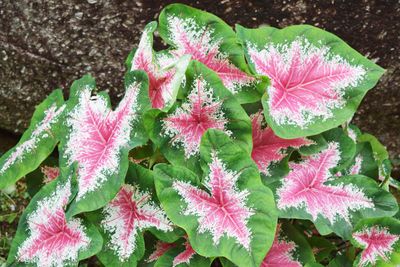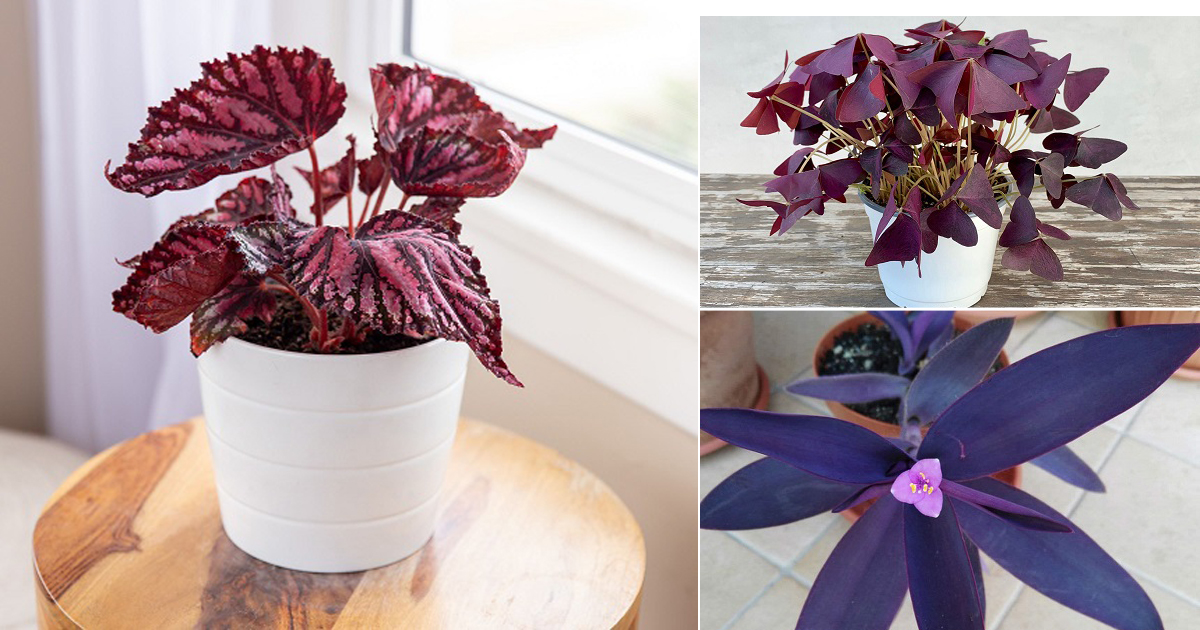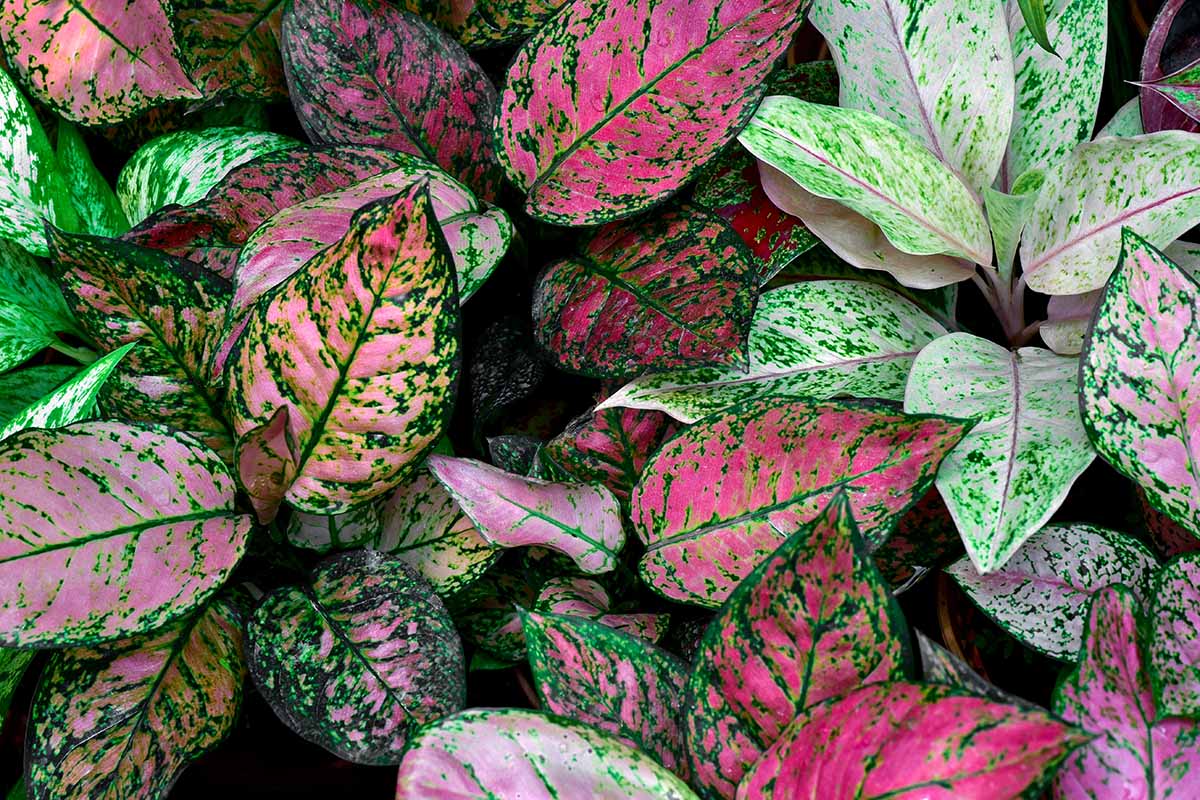Discover the Beauty of Colored Leaf Plants
Indoor plants with colored leaves are a great way to add a pop of color and vibrancy to any room. These plants are not only aesthetically pleasing, but they also offer numerous benefits, including air purification and improved mental health. With their unique features and low-maintenance requirements, it’s no wonder why colored leaf plants have become increasingly popular among indoor gardening enthusiasts.
One of the most significant advantages of indoor plants with colored leaves is their ability to purify the air. These plants are natural air cleaners, removing toxins and pollutants from the air and replacing them with oxygen. This makes them an excellent choice for indoor spaces, particularly in areas with poor air quality. Additionally, the vibrant colors of these plants can help to boost mood and reduce stress, creating a more relaxing and calming environment.
Colored leaf plants are also incredibly versatile, coming in a wide range of shapes, sizes, and colors. From the deep purple leaves of the Coleus plant to the bright yellow leaves of the Croton plant, there’s a colored leaf plant to suit every style and decor. Whether you’re looking to add a statement piece to your living room or a touch of color to your office space, indoor plants with colored leaves are an excellent choice.
Furthermore, many colored leaf plants are relatively low-maintenance, making them perfect for busy people or those new to indoor gardening. These plants are often easy to care for, requiring only minimal watering, fertilizing, and pruning. This makes them an excellent choice for those who want to enjoy the benefits of indoor plants without the hassle of high-maintenance care.
Incorporating indoor plants with colored leaves into your indoor space can also have a significant impact on your mental health. Studies have shown that being around plants can reduce stress, anxiety, and depression, while also improving mood and cognitive function. With their vibrant colors and natural beauty, colored leaf plants are an excellent way to bring some of the outdoors into your indoor space.
How to Choose the Perfect Colored Leaf Plant for Your Home
When it comes to selecting the right indoor plant with colored leaves for your home, there are several factors to consider. Lighting, temperature, and maintenance requirements are all crucial elements to think about before making a decision. By choosing a plant that fits your lifestyle and environment, you can ensure that it thrives and brings joy to your space.
One of the most important factors to consider is lighting. Some colored leaf plants, such as Coleus and Croton, require bright, direct light to maintain their vibrant colors. Others, like Polka Dot Plant and Prayer Plant, prefer bright, indirect light. Make sure to choose a plant that fits the lighting conditions of your home.
Temperature is another important factor to consider. Most colored leaf plants prefer daytime temperatures between 65-75°F (18-24°C) and nighttime temperatures around 55-65°F (13-18°C). Some plants, like Bromeliads, can tolerate warmer temperatures, while others, like Calathea, prefer cooler temperatures.
Maintenance requirements are also essential to consider. Some colored leaf plants, like Coleus and Croton, require regular watering and fertilizing to maintain their vibrant colors. Others, like Prayer Plant and Wandering Jew, are more low-maintenance and can thrive with infrequent watering and fertilizing.
Popular varieties of indoor plants with colored leaves include Coleus, Croton, Polka Dot Plant, and Prayer Plant. These plants are known for their vibrant colors and relatively low-maintenance requirements, making them perfect for busy people or those new to indoor gardening.
When selecting a colored leaf plant, also consider the mature size of the plant and its growth habits. Some plants, like Bromeliads, can grow quite large and require regular pruning to maintain their shape. Others, like Calathea, are more compact and require less pruning.
By considering these factors and choosing a plant that fits your lifestyle and environment, you can enjoy the beauty and benefits of indoor plants with colored leaves in your home.
Top Colored Leaf Plants for Low-Maintenance Care
If you’re new to indoor gardening or have a busy schedule, you’ll love these low-maintenance colored leaf plants. They’re perfect for adding a pop of color to your space without requiring a lot of fuss.
Prayer Plant (Maranta leuconeura) is a stunning example of a low-maintenance colored leaf plant. Its beautiful, unique foliage features vibrant colors and patterns, and it’s relatively small size makes it perfect for shelves or desks. To care for a Prayer Plant, simply water it when the soil feels dry to the touch, and fertilize it once a month.
Wandering Jew (Tradescantia fluminensis) is another low-maintenance option that’s perfect for indoor gardening beginners. Its trailing stems and colorful leaves make it a great choice for hanging baskets or containers. To care for a Wandering Jew, simply water it when the soil feels dry, and fertilize it once a month.
Coleus (Solenostemon scutellarioides) is a popular choice for indoor gardening, and for good reason. Its vibrant, colorful leaves are relatively low-maintenance, and it can thrive in a variety of lighting conditions. To care for a Coleus, simply water it when the soil feels dry, and fertilize it once a month.
These plants are all great options for busy people or those new to indoor gardening. They’re relatively low-maintenance, and can thrive in a variety of conditions. By choosing one of these plants, you can add a pop of color to your space without breaking the bank or sacrificing too much time.
Remember, the key to keeping your colored leaf plants happy and healthy is to provide them with the right amount of light, water, and nutrients. By following these simple care instructions, you can enjoy the beauty and benefits of indoor plants with colored leaves in your home.
Colored Leaf Plants for Bright and Bold Statements
If you’re looking to make a statement with your indoor plants, consider adding some bold and vibrant colored leaf plants to your space. These plants are sure to add a pop of color and create a dramatic touch in any room.
Bromeliads are a great example of a statement-making colored leaf plant. These plants are known for their bright, long-lasting flowers and vibrant foliage. They come in a variety of colors, including pink, orange, and yellow, and can add a bold touch to any room.
Nerve Plant (Fittonia albivenis) is another great option for adding a bold statement to your space. This plant features beautiful, veined leaves in a variety of colors, including pink, white, and red. It’s relatively small size makes it perfect for shelves or desks.
Calathea (Calathea spp.) is a popular choice for indoor gardening, and for good reason. Its beautiful, colorful leaves are sure to add a pop of color to any room. Calathea comes in a variety of colors, including pink, white, and purple, and can thrive in a variety of lighting conditions.
These plants are all great options for adding a bold and vibrant touch to your space. They’re perfect for making a statement and adding some personality to your indoor garden. By incorporating one of these plants into your space, you can add a pop of color and create a dramatic touch that’s sure to impress.
When caring for these plants, be sure to provide them with the right amount of light, water, and nutrients. Bromeliads prefer bright, indirect light, while Nerve Plant and Calathea prefer bright, direct light. Watering and fertilizing requirements will vary depending on the specific plant, so be sure to research the specific needs of your plant.
Using Colored Leaf Plants in Interior Design
Colored leaf plants can be a great addition to any interior design, adding a pop of color and vibrancy to a room. Here are some ways to incorporate colored leaf plants into your interior design:
Use them as accent pieces: Colored leaf plants can be used as accent pieces to add a splash of color to a room. Place them on a shelf or mantle, or use them as a centerpiece for a coffee table or dining table.
Add them to shelves or mantles: Colored leaf plants can be added to shelves or mantles to create a beautiful display. Choose plants with different shapes and sizes to create a visually interesting display.
Combine them with other decorative elements: Colored leaf plants can be combined with other decorative elements, such as vases, sculptures, or artwork, to create a unique and interesting display.
Use them to create a focal point: Colored leaf plants can be used to create a focal point in a room, drawing the eye to a particular area. Choose a plant with a bold or striking color to create a dramatic effect.
Consider the color scheme: When choosing a colored leaf plant, consider the color scheme of the room. Choose a plant that complements the colors in the room, or one that provides a bold contrast.
Don’t forget about texture: Colored leaf plants can also add texture to a room, providing a interesting contrast to smooth surfaces. Choose plants with different textures, such as smooth leaves or fuzzy leaves, to add depth and interest to a room.
By incorporating colored leaf plants into your interior design, you can add a pop of color and vibrancy to a room, creating a beautiful and unique space.
Colored Leaf Plant Care Essentials
To keep your indoor plants with colored leaves thriving, it’s essential to provide them with the right care. Here are some essential tips to help you keep your colored leaf plants healthy and vibrant:
Watering: Over-watering is one of the most common mistakes people make when caring for indoor plants with colored leaves. Make sure to check the soil moisture by sticking your finger into the soil up to the first knuckle. If the soil feels dry, it’s time to water. Water your plants thoroughly, but make sure not to let the pot sit in water.
Fertilizing: Feed your indoor plants with colored leaves with a balanced fertilizer during the growing season (spring and summer). Dilute the fertilizer to half the recommended strength to avoid burning the roots.
Pruning: Prune your indoor plants with colored leaves regularly to maintain their shape and encourage new growth. Remove any dead or dying leaves or stems, and cut back overgrown branches.
Pest control: Check your plants regularly for pests like spider mites, mealybugs, and scale. If you find any, treat your plants with insecticidal soap or neem oil.
Lighting: Most indoor plants with colored leaves prefer bright, indirect light. However, some plants like Coleus and Croton can tolerate direct sunlight. Make sure to research the specific lighting requirements for your plants.
Temperature: Indoor plants with colored leaves prefer daytime temperatures between 65-75°F (18-24°C) and nighttime temperatures around 55-65°F (13-18°C). Avoid placing your plants near heating or cooling vents, fireplaces, or drafty windows.
Humidity: Indoor plants with colored leaves prefer a humid environment, but they can adapt to average humidity levels. To keep your plants happy, you can place the pot on a tray filled with water and pebbles or use a humidifier.
By following these care essentials, you can keep your indoor plants with colored leaves healthy, vibrant, and thriving.
Common Problems and Solutions for Colored Leaf Plants
While indoor plants with colored leaves are relatively low-maintenance, they can still experience some common problems. Here are some troubleshooting tips and solutions to help you overcome these challenges:
Fading colors: If the colors of your indoor plant with colored leaves are fading, it may be due to a lack of light. Move the plant to a brighter location or consider using grow lights to supplement the natural light.
Leaf drop: If the leaves of your indoor plant with colored leaves are dropping, it may be due to over-watering or under-watering. Check the soil moisture and adjust your watering schedule accordingly.
Pests: Indoor plants with colored leaves can be susceptible to pests like spider mites, mealybugs, and scale. Check your plants regularly for signs of pests and treat them with insecticidal soap or neem oil if necessary.
Yellowing leaves: If the leaves of your indoor plant with colored leaves are turning yellow, it may be due to a nutrient deficiency. Fertilize your plant with a balanced fertilizer to provide it with the necessary nutrients.
Slow growth: If your indoor plant with colored leaves is not growing as quickly as you would like, it may be due to a lack of light or nutrients. Consider moving the plant to a brighter location or fertilizing it with a balanced fertilizer.
By following these troubleshooting tips and solutions, you can help your indoor plants with colored leaves thrive and maintain their vibrant colors and healthy growth.
Conclusion: Bringing Color and Life to Your Indoor Space
Indoor plants with colored leaves are a great way to add a pop of color and vibrancy to any room. With their unique features and benefits, such as air purification and aesthetic appeal, they can bring life and beauty to your indoor space.
By choosing the right colored leaf plant for your home, using them in interior design, and providing proper care, you can enjoy the beauty and benefits of these plants for years to come.
Whether you’re a seasoned gardener or just starting out, indoor plants with colored leaves are a great way to bring some color and life to your indoor space. So why not give them a try? With their low-maintenance requirements and vibrant colors, they’re perfect for anyone looking to add some beauty and life to their home.
Do you have a favorite indoor plant with colored leaves? Share it with us in the comments below Or, if you have any questions about caring for your indoor plants, feel free to ask. We’d love to hear from you!








